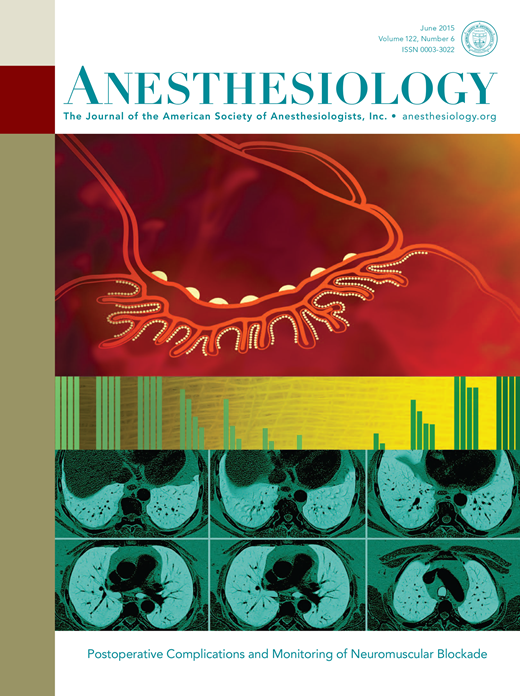Adverse events associated with airway management in pediatric anesthesia: A prospective, multicenter, observational Japan Pediatric Difficult Airway in Anesthesia (J-PEDIA) study.
IF 9.1
1区 医学
Q1 ANESTHESIOLOGY
引用次数: 0
Abstract
BACKGROUND The incidence of adverse events and desaturation during airway-securing procedures (a sequence from preoxygenation to completion of tracheal intubation or supraglottic airway placement) under general anesthesia in children remains underexplored. Thus, we investigated the incidence of adverse and desaturation events and associated risk factors. METHODS This was a prospective, multicenter, observational study conducted between June 2022 and January 2024 in 10 tertiary care (six pediatric and four university [mixed adult-pediatric]) hospitals in Japan. A standardized data collection system was applied through the recruited institutions to collect ≥95% of cases. The primary and secondary outcomes were adverse events and a ≥10% drop in oxygen saturation (desaturation) associated with airway-securing procedures. RESULTS There were 17007 airway management procedures in 16695 children (mean age 6.3 years, standard deviation 4.8). Any adverse events occurred in 346/17007 (2.0%; 95% CI, 1.8-2.3) children, including 189/17007 (1.1%; 0.96-1.3) respiratory adverse events. Desaturation occurred during 395/17007 (2.3%; 2.1-2.6) procedures, with 66/308 (21.4%; 17.0-26.4) in neonates and 210/2298 (9.1%; 8.0-10.4) in infants. Multilevel regression analysis showed younger age (adjusted odds ratio 0.92, 95% CI, 0.90-0.95; p<0.001), airway management in radiation diagnostic/therapy rooms (5.7, 1.64-19.9; p=0.006), airway sensitivity (1.46, 1.09-1.94; P=0.010), craniocervical surgery (1.41, 1.09-1.83; p=0.009), and presence of 1 or ≥2 anatomical difficult airway features (1.74, 1.02-2.95; p=0.042 and 2.82, 1.21-6.6; p=0.017, respectively) as risk factors of any adverse events. Supraglottic airway device usage at the first attempt and muscle relaxant administration (0.42, 0.288-0.62; p<0.001 and 0.62, 0.43-0.89; p=0.009, respectively) showed a beneficial effect. CONCLUSIONS The J-PEDIA study demonstrated adverse event and desaturation incidences and the impact of clinically relevant risk factors during airway-securing procedures in Asian children. This study can help anesthesiologists to identify high-risk children and create a safe airway-securing strategy.与小儿麻醉气道管理相关的不良事件:一项前瞻性、多中心、观察性的日本小儿麻醉气道困难(J-PEDIA)研究。
背景:儿童全麻下气道安全手术(从预充氧到完成气管插管或声门上气道放置的顺序)的不良事件和去饱和发生率仍未得到充分研究。因此,我们调查了不良事件和去饱和事件的发生率以及相关的危险因素。方法:这是一项前瞻性、多中心、观察性研究,于2022年6月至2024年1月在日本10家三级保健医院(6家儿科医院和4家大学[成人-儿科混合]医院)进行。通过入选机构采用标准化的数据收集系统,收集≥95%的病例。主要和次要结局是不良事件和与气道安全手术相关的氧饱和度(去饱和)下降≥10%。结果16695例患儿共17007例气道管理程序,平均年龄6.3岁,标准差4.8。346/17007例发生不良事件(2.0%;95% CI, 1.8-2.3)例儿童,包括189/17007例(1.1%;0.96-1.3)呼吸不良事件。在395/17007期间发生去饱和(2.3%;2.1-2.6)程序,66/308 (21.4%;17.0 ~ 26.4), 210/2298 (9.1%;8.0-10.4)。多水平回归分析显示年龄更小(校正优势比0.92,95% CI, 0.90-0.95;P <0.001),放射诊断/治疗室气道管理(5.7,1.64-19.9;P =0.006),气道敏感性(1.46,1.09-1.94;P=0.010),颅颈外科(1.41,1.09-1.83;P =0.009),存在1个或≥2个解剖上困难的气道特征(1.74,1.02-2.95;P =0.042和2.82,1.21-6.6;P =0.017)作为不良事件的危险因素。首次尝试时声门上气道装置使用情况和肌肉松弛剂使用情况(0.42,0.288-0.62;P <0.001、0.62、0.43 ~ 0.89;P =0.009)显示出有益的效果。结论J-PEDIA研究证实了亚洲儿童在气道安全手术过程中的不良事件和去饱和发生率以及临床相关危险因素的影响。这项研究可以帮助麻醉师识别高危儿童,并制定安全的气道保护策略。
本文章由计算机程序翻译,如有差异,请以英文原文为准。
求助全文
约1分钟内获得全文
求助全文
来源期刊

Anesthesiology
医学-麻醉学
CiteScore
10.40
自引率
5.70%
发文量
542
审稿时长
3-6 weeks
期刊介绍:
With its establishment in 1940, Anesthesiology has emerged as a prominent leader in the field of anesthesiology, encompassing perioperative, critical care, and pain medicine. As the esteemed journal of the American Society of Anesthesiologists, Anesthesiology operates independently with full editorial freedom. Its distinguished Editorial Board, comprising renowned professionals from across the globe, drives the advancement of the specialty by presenting innovative research through immediate open access to select articles and granting free access to all published articles after a six-month period. Furthermore, Anesthesiology actively promotes groundbreaking studies through an influential press release program. The journal's unwavering commitment lies in the dissemination of exemplary work that enhances clinical practice and revolutionizes the practice of medicine within our discipline.
 求助内容:
求助内容: 应助结果提醒方式:
应助结果提醒方式:


